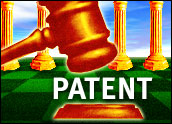
In a hotly contested case, Association for Molecular Pathology v. Myriad Genetics, the Supreme Court on Thursday unanimously decided that some of Myriad’s patent claims were invalid for claiming products of nature. However, the Court also held that other Myriad patent claims were perfectly valid.
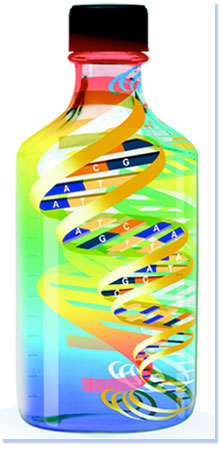
In short, Myriad discovered the location and DNA sequence listing for two human genes that pertain to breast and ovarian cancer — i.e., it isolated the genes from the surrounding genetic material. This effort was considerable, and Myriad obtained a variety of patents on this discovery.
Myriad then worked to market its cancer test and employed its patents in an effort to secure market exclusivity. Other researchers in this field, which is obviously a very critical one, were told to cease and desist in their efforts to market competing tests.
Soon afterward, there was a hue and cry over the inappropriateness of the Myriad patents. Many also complained about Myriad’s alleged heavy-handedness in maintaining its market dominance. Litigation ensued, culminating in Thursday’s decision.
Justice Thomas, the laconic one, wrote about transcription, translation, exons, introns, and other quite advanced technological issues in clear prose, dividing — isolating — the Myriad patent claims into two groups: invalid and valid.
Nature Can’t Be Patented
Despite the current controversy about the ease of patenting, patents are difficult to obtain. Patent claims for exclusivity rights carefully demarcate the boundaries of what has been invented. The U.S. Patent & Trademark Office stands as a bulwark against people obtaining frivolous or unworthy patents, and the patent application process can take years of negotiation — with no assurance of a patent in the end.
All patents must run a gauntlet of strict regulations. All patentable inventions must be new and nonobvious over all that is known, and be sufficiently described so that others may copy the invention.
Eligibility for patent is governed by threshold statute 35 U.S.C. 101, which permits patenting most compositions, manufactures and methods. There are, however, various types of innovations that cannot be patented — i.e., those relating to abstractions, laws of nature and natural products. However, patentable innovations can apply to those same natural laws and products. The contention in Myriad was that the claimed invention was something naturally occurring and not amenable to patenting.
Myriad’s first set of patent claims is directed to the cancer-related sequences it discovered and isolated. In other words, those claims covered testing techniques that determined whether a tissue sample contained that specific sequence. If present, then a predisposition for cancer was indicated.
Justice Thomas and the Court considered Myriad’s claims directed to the informational content of the gene sequence, which is inherent, as not subject to patenting, since they were to naturally occurring products. The Court emphasized that Myriad merely uncovered something natural and neither created nor altered it. Furthermore, the Court discounted the efforts made by Myriad in discovering and isolating the sequence as not inventive.
However, Justice Thomas deemed the second set of patent claims as patentable, because the product generated — called “complementary DNA,” or “cDNA” — was not naturally occurring. In particular, those claims involved the product of the extraction of pertinent information (exons that code for amino acids) and omission of irrelevant information (introns that do not) from the cancer-related gene sequence, creating the cDNA containing only the exons.
The court unanimously held that these man-made, extracted creations, not found in nature, were patentable, despite containing genetic information — albeit reorganized somewhat. In other words, there was an alteration from the natural order.
Risky Business
A troubling aspect of this case is the Court’s adamant position that all of the effort of the discovery was meaningless. In some areas of technology, the extensive research and development costs expended to discover a genetic correlation — such as in this case, for an insidious cancer — may be enormous, with great cost and great risk.
In seeking a patent, it may be difficult to capture in claim words the full dynamics of the innovation, and here the claim language was deemed too broad. Even though Myriad still has many patent claims surviving — beyond the cDNA claims — other companies may see the Supreme Court’s broad pronouncement as problematic, giving competitors yet more tools to contest patents.
Some innovations may be difficult to patent, such as a software development or perhaps a future cure for disease, and companies may thus be forced to rely on trade secret measures to maintain their market position, thereby depriving the world of technological disclosure.
Patents demand full disclosure and sharing of information in exchange for limited patent rights. Further, the recent patent law changes make any delay in filing for patents on a new discovery — such as needing to first develop products from that discovery — quite risky.
Hopefully, the Justices’ prohibition will not thwart endeavors in future technologies, particularly those in information-intensive areas. The overfocus on Section 101 by the Court, as well as by the press and others, belies the numerous and difficult hurdles a patent applicant must surmount to obtain a patent — i.e., all innovations must be new, nonobvious and descriptively complete. Challenges abound for all patentees, including numerous new protocols passed by Congress in the America Invents Act of 2011.
Patents as Innovation Engines
Another troubling aspect of the case is the Court’s propensity to view patents as tying up “basic tools” of research and otherwise preempting research. This is quite unfair and quite misleading.
Our Founders created our patent system as a means to encourage innovation by giving innovators a way to obtain a short-term benefit — i.e., a patent — in exchange for the long-term benefit of full disclosure to society (and competitors). Abraham Lincoln, who not only obtained a patent but litigated one, said that our patent system adds the “fuel of interest to the fires of creation.”
Patents must have a description, which describes the invention in detail, and claims, which limit the extent of the invention. Further, the patent, as befits its name, is an open document to the public. Competitors can thus readily ascertain the extent of the patent and steer around it.
Arguably, instead of preempting or discouraging research, the patent system by its very openness encourages others to design around — to think different. The Justices, Congress and the press conveniently forget this critical function of patenting that was not lost on our Founders.
Although Myriad won and lost Thursday, care must be taken to prevent further curtailment of the patent system, whether by the Court or Congress. Future innovations, future conveniences and future cures must be encouraged and promoted. The patent system is a basic tool that should not be tied up or prevented from functioning properly.

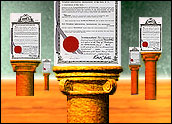
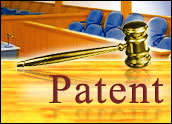
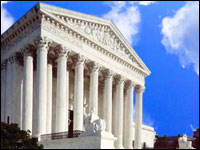
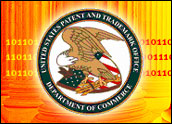
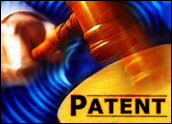

































Social Media
See all Social Media